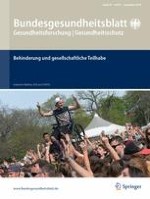01.08.2016 | Ionisierende Strahlen | Originalien und Übersichten
Gesundheitliche Folgen des Unfalls von Tschernobyl – 30 Jahre danach
Erschienen in: Bundesgesundheitsblatt - Gesundheitsforschung - Gesundheitsschutz | Ausgabe 9/2016
Einloggen, um Zugang zu erhalten










